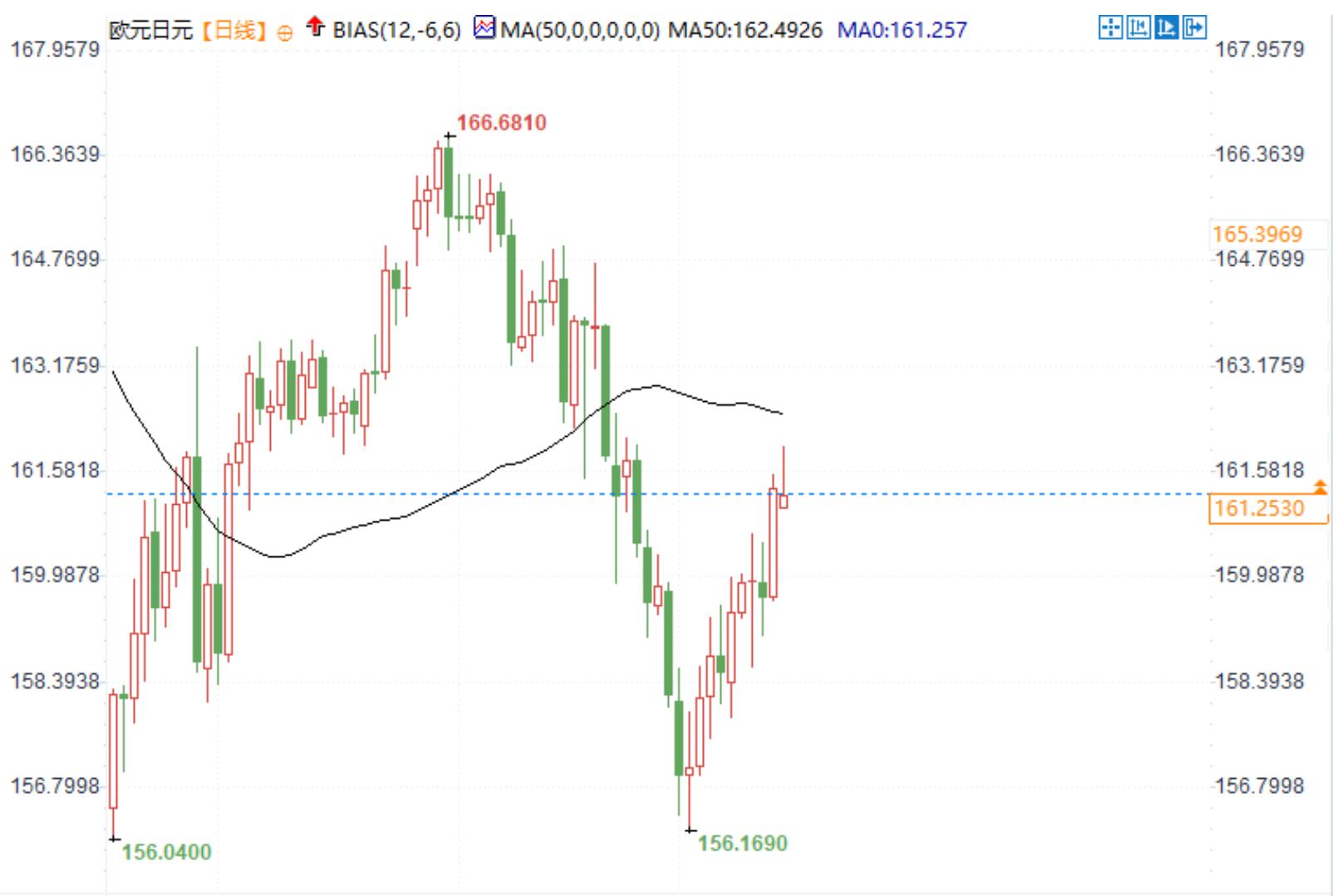The Federal Reserve may cut interest rates, the Bank of Japan may maintain stability: the yen is under pressure, who can break through between the Australian dollar and the euro?
As of December 16th, the AUD/USD has stopped its continuous decline and is trading around 0.6370, as the market expects the Federal Reserve to cut interest rates by 25 basis points on December 19th, putting pressure on the US dollar. However, the dovish stance of the Reserve Bank of Australia and weak economic data have put pressure on the Australian dollar. The Australian dollar is facing a downward support of 0.6348 and is expected to rebound after breaking through the upward resistance of 0.6419. The euro/yen traded at 161.30, supported by expectations of the Bank of Japan keeping interest rates unchanged, but the dovish attitude of the European Central Bank limited the euro's upward movement. The market is paying attention to the Eurozone PMI data and Lagarde's speech.
Due to market expectations that the Federal Reserve will cut interest rates by 25 basis points, the US dollar is under pressure
Against the backdrop of weak US bond yields, the Australian dollar/US dollar halted its four-day decline on Monday, December 16th, with the US dollar slightly falling as the market awaits the Federal Reserve's interest rate decision on December 19th.
The market generally expects the Federal Reserve to announce a 25 basis point rate cut at its last monetary policy meeting in 2024. According to the CME Federal Reserve Watch tool, the market is almost entirely pricing the Fed's 25 basis point rate cut at its December meeting.
The dovish stance of the Reserve Bank of Australia puts pressure on the Australian dollar
The Reserve Bank of Australia kept the official cash rate (OCR) unchanged at 4.35% at its last policy meeting in December. Australian Federal Reserve Chairman Brock emphasized that although the risk of rising inflation has eased, the problem still exists and requires continued vigilance. The Reserve Bank of Australia will closely monitor all economic data, including employment data, to guide future policy decisions.
Due to the dovish stance taken by the Reserve Bank of Australia, the Australian dollar is facing additional pressure. Traders have increased their bets on earlier and more significant interest rate cuts by the Reserve Bank of Australia. However, the future decisions of the Reserve Bank of Australia will be data-driven, and its policy path will be adjusted based on evolving risk assessments.
Preliminary data from Australia shows that the Judo Bank Manufacturing Purchasing Managers' Index (PMI) for December decreased from 49.4 in November to 48.2. Meanwhile, the service sector PMI slightly decreased from 50.5 to 50.4, while the composite PMI decreased from 50.2 to 49.9.
After seasonal adjustment, the number of employed people in Australia increased by 35600, and the total number of employed people in November reached 14.5355 million. Meanwhile, the unemployment rate dropped to 3.9%, hitting a new low since March and lower than market expectations of 4.2%.
In terms of technology, analyst Faruqui provided the following interpretation:
As of Monday, December 16th, AUDUSD is hovering around 0.6370. Daily chart analysis shows that the exchange rate continues to decline within the downward channel, so the Australian dollar/US dollar still has a bearish trend. In addition, the RSI remained above the 30 level on the 14th, indicating sustained bearish momentum;
On the downside side, the level of 0.6348 constitutes immediate support. If it falls below this level, AUDUSD may face further downward pressure, with a target near the lower boundary of the downward channel at 0.6180;
On the upward side, the initial resistance level of AUD/USD is around 0.6396, followed by 0.6419, which is consistent with the upper boundary of the downward channel. If the upper boundary of the channel is breached, the exchange rate may further rise, with a target of an eight week high of 0.6687.

As of Monday, December 16th, EUR/JPY was trading around 161.30 and had previously risen to 161.65. The market generally expects the Bank of Japan to maintain interest rates unchanged and the yen to weaken at its December meeting.
In addition, the political stability brought by French President Macron's appointment of a new prime minister has boosted the euro, but the dovish stance of the European Central Bank may limit its upward potential. It is worth noting that the preliminary data of the Eurozone's Purchasing Managers' Index (PMI) for December will be released at 17:00 Beijing time on December 16th, and European Central Bank President Lagarde will also give a speech on the same day.
The Bank of Japan
The Bank of Japan will hold its final policy meeting of the year on December 18-19. At present, the market expects the possibility of a rate hike in December to be less than 30%. Several officials from the Bank of Japan have stated that they are not in a hurry to further tighten monetary policy due to the low risk of excessive inflation (although Japan's borrowing costs are still close to zero). This brings some selling pressure to the Japanese yen, thereby providing some support for EUR/JPY.
ECB aspect
French President Macron appointed his centrist ally Francois Bayrou as prime minister last Friday, providing support for the euro in hopes of political stability. However, due to the European Central Bank's interest rate cut path, the upward potential of the euro may be limited.
The European Central Bank lowered interest rates by 25 basis points to 3.0% last week and warned that economic growth would be weaker than previously expected. The market expects that the European Central Bank will further implement five 25 basis point interest rate cuts until September next year, lowering the deposit rate to 1.75%.

Tips:This page came from Internet, which is not standing for FXCUE opinions of this website.
Statement:Contact us if the content violates the law or your rights
